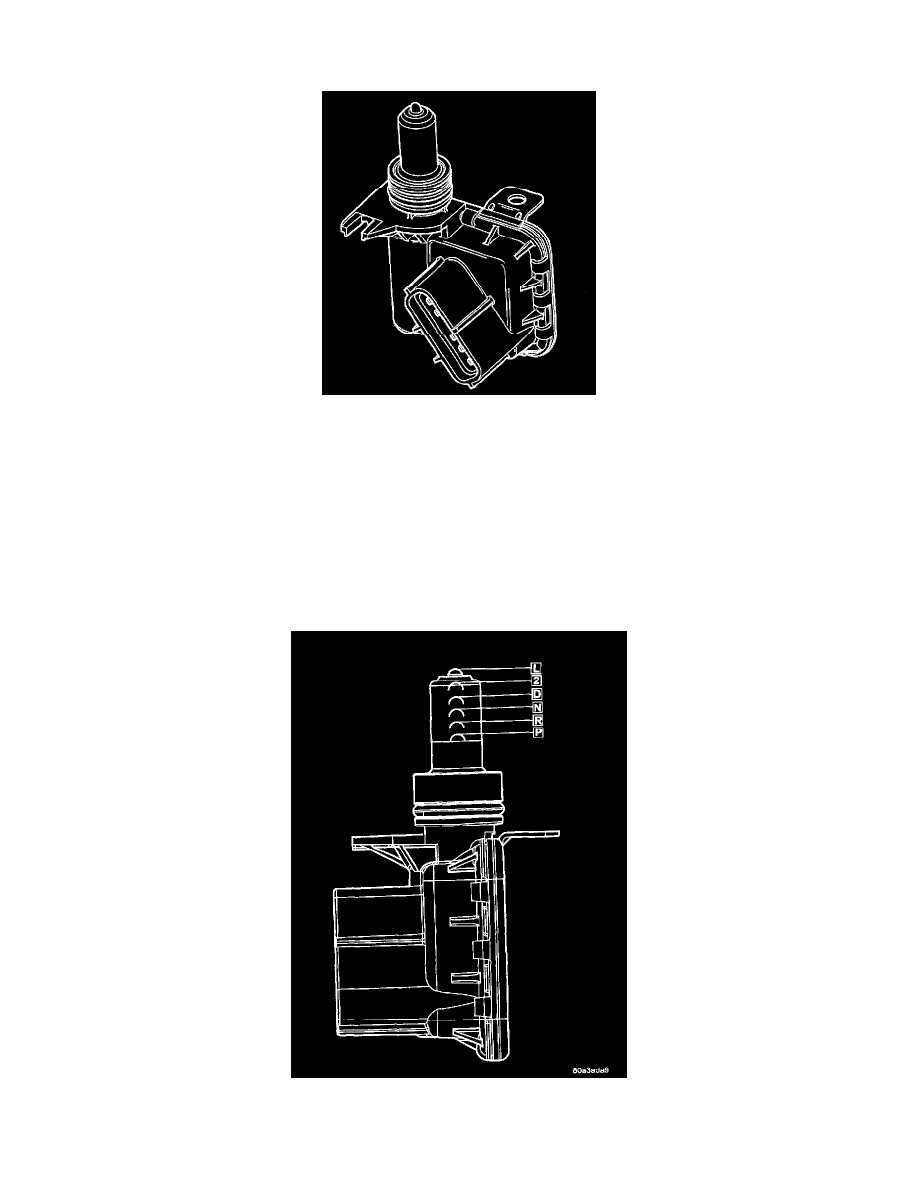Dakota 2WD L4-2.5L VIN P (2001)

Transmission Mode Switch: Description and Operation
DESCRIPTION
The Transmission Range Sensor (TRS) (Fig. 251) has 3 primary functions:
-
Provide a PARK/NEUTRAL start signal to the engine controller and the starter relay.
-
Turn the Back-up lamps on when the transmission is in REVERSE and the engine (ignition) is on.
-
Provide a transmission range signal to the instrument cluster.
The sensor is mounted in the transmission housing near the valve body, just above the pan rail. It's in the same position as the Park/Neutral switch on
other transmissions. The TRS contacts a cammed surface on the manual valve lever. The cammed surface translates the rotational motion of the
manual lever into the linear motion of the sensor. The cammed surface on the manual lever is comprised of two parts controlling the TRS signal: The
insulator portion contacts the switch poppet when the manual lever is not in PARK or NEUTRAL. The manual lever itself contacts the poppet when
the lever is in PARK or NEUTRAL; providing a ground for the signal from the starter relay and the JTEC engine controller.
OPERATION
As the switch moves through its linear motion (Fig. 252) contacts slide across a circuit board which changes the resistance between the range sensing
pins of the switch. A power supply on the instrument cluster provides a regulated voltage signal to the switch. The return signal is decoded by the
cluster, which then controls the PRNDL display to correspond with the correct transmission range. A bus message of transmission range is also sent by
